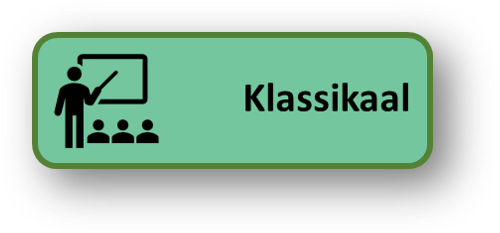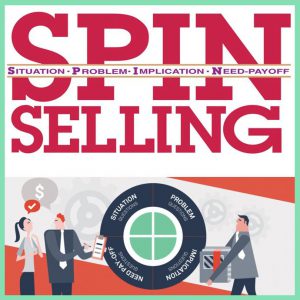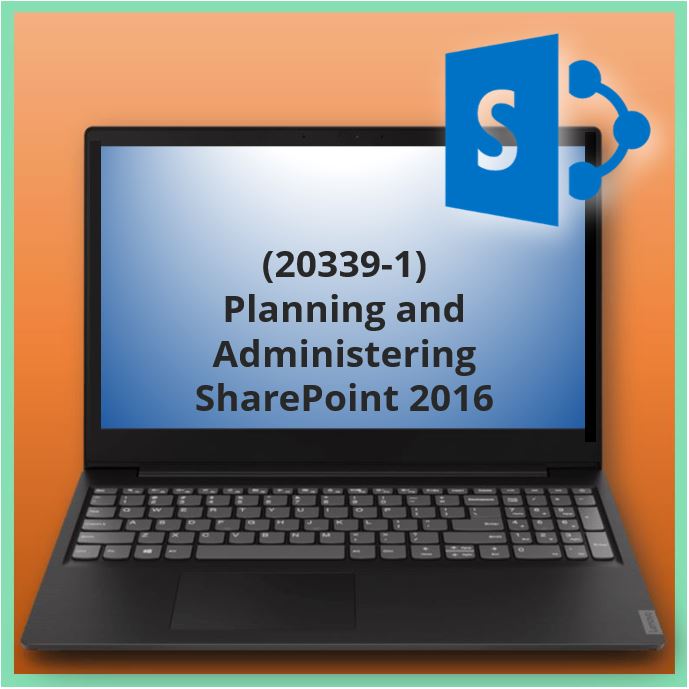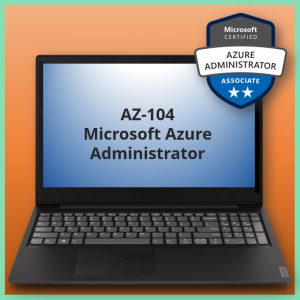Aangeboden leervormen



Planning and Administering SharePoint 2016 (20339-1)
About this course
This will provide you with the knowledge and skills to plan and administer a Microsoft SharePoint 2016 environment. The course teaches you how to deploy, administer, and troubleshoot your SharePoint environment. This course also provides guidelines, best practices, and considerations that help you optimize your SharePoint deployment.
This is the first in a sequence of two courses for IT professionals and is aligned with the SharePoint 2016 IT Pro certification. Audience profile
The course is targeted at experienced IT professionals who are interested in learning how to install, configure, deploy, and manage SharePoint 2016 installations either in a data center or in the cloud.
Students typically have more than one year of hands-on experience* with planning and maintaining SharePoint and two years’ experience with other core technologies on which SharePoint depends, including Windows Server 2012 R2 or later, Internet Information Services (IIS), Microsoft SQL Server 2014 or later, Active Directory Domain Services (AD DS), and networking infrastructure services.
The minimally qualified candidate typically:
• Is an IT professional who plans, implements, and maintains a multi-server deployment of SharePoint 2016.
• Has a working knowledge of, and preferably hands-on experience, with SharePoint Online.
• Has broad familiarity with SharePoint workloads.
• Has experience with business continuity management, including data backup, restoration, and high availability.
• Has experience with authentication and security technologies.
• Has experience with Windows PowerShell.
* The hands-on experience or job experience should be from a solutions-based role where the candidate has worked on multiple solutions in the SharePoint space that includes document management, content management, and search.
At course completion
After completing this course, students will be able to:
• Describe the key features of SharePoint 2016.
• Design an information architecture for a SharePoint 2016 deployment.
• Design a logical architecture for a SharePoint 2016 deployment.
• Design the physical architecture for a SharePoint 2016 deployment.
• Install and configure SharePoint 2016.
• Create and configure web applications and site collections.
• Plan and configure service applications for a SharePoint 2016 deployment.
• Manage users and permissions, and secure content in a SharePoint 2016 deployment.
• Configure authentication in a SharePoint 2016 deployment.
• Configure platform and farm-level security in a SharePoint 2016 deployment.
• Manage information taxonomy in SharePoint web applications and site collections.
• Configure and manage user profiles and audiences.
• Configure and manage the search experience in SharePoint 2016.
• Monitor, maintain, and troubleshoot a SharePoint 2016 deployment.
About this course
This will provide you with the knowledge and skills to plan and administer a Microsoft SharePoint 2016 environment. The course teaches you how to deploy, administer, and troubleshoot your SharePoint environment. This course also provides guidelines, best practices, and considerations that help you optimize your SharePoint deployment.
This is the first in a sequence of two courses for IT professionals and is aligned with the SharePoint 2016 IT Pro certification. Audience profile
The course is targeted at experienced IT professionals who are interested in learning how to install, configure, deploy, and manage SharePoint 2016 installations either in a data center or in the cloud.
Students typically have more than one year of hands-on experience* with planning and maintaining SharePoint and two years’ experience with other core technologies on which SharePoint depends, including Windows Server 2012 R2 or later, Internet Information Services (IIS), Microsoft SQL Server 2014 or later, Active Directory Domain Services (AD DS), and networking infrastructure services.
The minimally qualified candidate typically:
• Is an IT professional who plans, implements, and maintains a multi-server deployment of SharePoint 2016.
• Has a working knowledge of, and preferably hands-on experience, with SharePoint Online.
• Has broad familiarity with SharePoint workloads.
• Has experience with business continuity management, including data backup, restoration, and high availability.
• Has experience with authentication and security technologies.
• Has experience with Windows PowerShell.
* The hands-on experience or job experience should be from a solutions-based role where the candidate has worked on multiple solutions in the SharePoint space that includes document management, content management, and search.
At course completion
After completing this course, students will be able to:
• Describe the key features of SharePoint 2016.
• Design an information architecture for a SharePoint 2016 deployment.
• Design a logical architecture for a SharePoint 2016 deployment.
• Design the physical architecture for a SharePoint 2016 deployment.
• Install and configure SharePoint 2016.
• Create and configure web applications and site collections.
• Plan and configure service applications for a SharePoint 2016 deployment.
• Manage users and permissions, and secure content in a SharePoint 2016 deployment.
• Configure authentication in a SharePoint 2016 deployment.
• Configure platform and farm-level security in a SharePoint 2016 deployment.
• Manage information taxonomy in SharePoint web applications and site collections.
• Configure and manage user profiles and audiences.
• Configure and manage the search experience in SharePoint 2016.
• Monitor, maintain, and troubleshoot a SharePoint 2016 deployment.

Voor wie
The course is targeted at experienced IT Professionals interested in learning how to install, configure, deploy and manage SharePoint Server 2016 installations in either the data center or the cloud.
Programma
Module 1: Introducing SharePoint 2016
This module describes the structure and capabilities of a SharePoint environment, and the major changes for IT professionals in SharePoint 2016. This module also describes the options available for deploying SharePoint 2016.Lessons
• The key components of a SharePoint deployment
• New features in SharePoint 2016
• SharePoint 2016 deployment options
After completing this module, students will be able to:
• Describe the structure and capabilities of a SharePoint environment.
• Describe the major changes for IT professionals in SharePoint 2016.
• Describe the options available for deploying SharePoint 2016.
Module 2: Designing an information architecture
This module describes how to gather business requirements, and the key elements of a successful information architecture project. This module also explains how to structure information within a SharePoint 2016 deployment and make it easy to find and retrieve.
Lessons
• Identifying business requirements
• Understanding business requirements for information architecture
• Organizing information in SharePoint 2016
• Planning for discoverability
Lab : Designing an information architecture – Part one
• Identifying site columns, content types, and term sets
Lab : Creating an information architecture – Part two
• Designing keywords, synonyms, promoted results, thesaurus, and managed properties
• Designing a taxonomy
After completing this module, students will be able to:
• Describe how to gather business requirements.
• Describe the key elements of a successful information architecture project.
• Plan how to structure information within a SharePoint 2016 deployment.
• Plan how to make information within a SharePoint 2016 deployment easier to find and retrieve.
Module 3: Designing a logical architecture
This module explains how to approach a logical architecture design and how to document it. Lessons
• Overview of a SharePoint 2016 logical architecture
• Documenting your logical architecture
Lab : Designing a logical architecture
• Planning a logical architecture
• Producing a logical architecture diagram
After completing this module, students will be able to:
• Explain how to approach a logical architecture design.
• Document a logical architectural design.
Module 4: Designing a physical architecture
This module describes the physical design requirements for SharePoint 2016, and the physical components necessary to fulfill the physical architecture design. It also explains the SharePoint farm topologies, and describes how to map a logical architecture design to a physical architecture design.
Lessons
• Designing the physical requirements of a SharePoint deployment
• Designing supporting software for the physical components of a SharePoint deployment
• SharePoint farm topologies
• Mapping a logical architecture design to a physical architecture design
Lab : Designing a physical architecture
• Designing a physical architecture
• Developing a physical architecture design diagram
After completing this module, students will be able to:
• Describe the physical design requirements for SharePoint 2016.
• Describe the physical components necessary to fulfil the physical architecture design.
• Identify SharePoint farm topologies.
• Map a logical architecture design to a physical architecture design.
Module 5: Installing and configuring SharePoint 2016
This module explains how to install SharePoint 2016 in different topologies, script the installation, and configure a SharePoint 2016 environment. This module also explains how to configure the core farm-level settings in a SharePoint 2016 deployment.
Lessons
• Installing SharePoint 2016
• Scripting the installation and configuring a SharePoint 2016 environment
• Configuring SharePoint 2016 farm settings
Lab : Provisioning SharePoint 2016
• Provisioning a SharePoint 2016 server farm
Lab : Configuring SharePoint 2016
• Configuring incoming email
• Configuring outgoing email
• Configuring integration with Microsoft Office Web Apps Server 2016
After completing this module, students will be able to:
• Install SharePoint 2016 in different topologies.
• Script the installation and configure a SharePoint 2016 environment.
• Configure the core farm-level settings in a SharePoint 2016 deployment.
Module 6: Creating web applications and site collections
This module explains how to create web applications in SharePoint 2016 and how to configure these applications. It also explains how to create and configure site collections in SharePoint 2016 and SharePoint Online.
Lessons
• Creating web applications
• Configuring web applications
• Creating and configuring site collections
Lab : Creating and configuring web applications
• Creating a web application
• Configuring a web application
Lab : Creating and configuring site collections
• Creating and configuring site collections
• Creating a site collection in a new content database
• Using Fast Site Collection Creation
After completing this module, students will be able to:
• Create web applications in SharePoint 2016.
• Configure web applications in SharePoint 2016.
• Create and configure site collections in SharePoint 2016 and SharePoint Online.
Module 7: Planning and configuring service applications
This module describes the service application architecture in SharePoint 2016, and how to provision and manage service applications.
Lessons
• Introduction to the service application architecture
• Creating and configuring service applications
Lab : Configuring services and service applications
• Provisioning a managed metadata service application with Central Administration
• Provisioning a managed metadata service application with Windows PowerShell
• Configuring service applications for document conversions
• Configuring service application proxy groups
After completing this module, students will be able to:
• Describe the service application architecture in SharePoint 2016.
• Provision and manage service applications.
Module 8: Managing users, permissions, and securing content
This module explains how to configure authorization in SharePoint 2016. It also explains how to configure site collection security in SharePoint 2016.
Lessons
• Configuring authorization in SharePoint 2016
• Managing access to content
Lab : Managing users and groups
• Creating a web application policy
• Creating and managing SharePoint groups
• Creating custom permission levels
Lab : Securing content in SharePoint 2016
• Managing permissions and inheritance
• Managing site collection security
• Enabling anonymous access to a site
After completing this module, students will be able to:
• Configure authorization in SharePoint 2016.
• Configure site collection security in SharePoint 2016.
Module 9: Configuring authentication for SharePoint 2016
This module explains about the SharePoint 2016 authentication infrastructure, and how to configure claims, providers, and identity federation for SharePoint 2016. It also explains how to configure server-to-server authentication for SharePoint 2016.
Lessons
• Overview of authentication
• Configuring federated authentication
• Configuring server-to-server authentication
Lab : Configuring SharePoint 2016 to use federated identities
• Configuring Active Directory Federation Services (AD FS) to make a web application a relying party
• Configuring SharePoint to trust AD FS as an identity provider
• Configuring a web application to use the AD FS identity provider
After completing this module, students will be able to:
• Explain the authentication infrastructure of SharePoint 2016.
• Configure claims providers and identity federation for SharePoint 2016.
• Configure server-to-server authentication for SharePoint 2016.
Module 10: Securing a SharePoint 2016 deployment
This module explains how to secure a SharePoint 2016 deployment at the platform level, and how to configure farm-level security settings for a SharePoint 2016 deployment.
Lessons
• Securing the platform
• Configuring farm-level security
Lab : Configuring SharePoint 2016 communication security
• Configuring SharePoint and Microsoft SQL Server to communicate over nonstandard ports
• Hardening a SharePoint server farm
Lab : Configuring farm-level security
• Configuring blocked file types
• Configuring web part security
• Implementing security auditing
After completing this module, students will be able to:
• Secure a SharePoint 2016 deployment at the platform level.
• Configure farm-level security settings for a SharePoint 2016 deployment.
Module 11: Managing taxonomy
This module explains how to create and manage content types and content-type propagation. Additionally, it explains how to implement managed metadata in SharePoint web applications and site collections. It also explains how to configure the managed metadata service application in SharePoint 2016.
Lessons
• Managing content types
• Understanding managed metadata
• Configuring the managed metadata service
Lab : Configuring content-type propagation
• Creating content types for propagation
• Publishing content types across site collections
Lab : Configuring and using the managed metadata service
• Configuring the managed metadata service
• Creating term sets and terms
• Consuming term sets
After completing this module, students will be able to:
• Create and manage content types and content-type propagation.
• Explain how to implement managed metadata in SharePoint web applications and site collections.
• Configure the managed metadata service application in SharePoint 2016.
Module 12: Configuring user profiles
This module explains how to configure the User Profile service application, and how to manage user profiles and audiences.
Lessons
• Configuring the User Profile service application
• Managing user profiles and audiences
Lab : Configuring user profiles
• Configuring the User Profile service application
• Configuring directory import and synchronization
Lab : Configuring and managing user profiles
• Provisioning My Sites
• Configuring audiences
After completing this module, students will be able to:
• Configure the User Profile service application.
• Manage user profiles and audiences.
Module 13: Configuring Enterprise Search
This module describes the Search service architecture, and explains how to configure the Search service in SharePoint 2016. It also explains how to manage the search experience in SharePoint 2016.
Lessons
• Understanding the Search service architecture
• Configuring the Search service
• Managing Enterprise Search
Lab : Configuring Enterprise Search
• Configuring the Search service application
• Configuring a file share content source
• Configuring a local SharePoint content source
• Creating a Search Center
Lab : Optimizing the search experience
• Configuring a result source and a query rule
• Customizing the search experience
• Creating and deploying a thesaurus
• Configuring entity extractors and refiners
• Managing query spelling correction
After completing this module, students will be able to:
• Describe the Search service architecture in SharePoint 2016.
• Configure the Search service in SharePoint 2016.
• Manage the search experience in SharePoint 2016.
Module 14: Monitoring and maintaining a SharePoint 2016 environment
This module explains how to implement a monitoring plan for SharePoint 2016, and how to optimize the performance of a SharePoint 2016 deployment. It also explains how to plan for and configure SharePoint caching. Further, it explains how to identify and resolve problems in a SharePoint 2016 environment.
Lessons
• Monitoring a SharePoint environment
• Tuning and optimizing a SharePoint environment
• Planning and configuring caching
• Troubleshooting a SharePoint environment
Lab : Monitoring a SharePoint 2016 deployment
• Configuring usage and health data
• Configuring diagnostic logging
• Configuring health analyzer rules
• Reviewing usage and health data
Lab : Investigating page load times
• Analyzing network traffic
• Analyzing SharePoint page performance
After completing this module, students will be able to:
• Implement a monitoring plan for SharePoint 2016.
• Optimize the performance of a SharePoint 2016 deployment.
• Identify how to plan for and configure SharePoint caching.
• Identify and resolve problems in a SharePoint 2016 environment.
Voorkennis
Before attending this course, students must have knowledge of:
• Software management in a Windows Server 2012 or Windows Server 2012 R2 enterprise server environment.
• Deploying and managing applications natively, virtually, and in the cloud.
• Administering IIS.
• Configuring AD DS for use in authentication, authorization, and as a user store.
• Managing an application remotely by using Windows PowerShell 4.0.
• Managing databases and server roles in SQL Server.
• Connecting applications to SQL Server.
• Implementing claims-based security.
• Using Microsoft Hyper-V virtual machines.
An ideal candidate for this course must have at least one year of experience with deploying and administering multiple SharePoint 2013 farms across a large enterprise. Because many customers have not upgraded from SharePoint 2010, a candidate can also have at least two years of experience with SharePoint 2010. However, they also must understand the differences between SharePoint 2010 and SharePoint 2013, particularly in terms of hybridization.
Examen
This course prepares for exam 70-339 Managing Microsoft SharePoint Server 2016 together with the course 20339-2 Advanced Technologies of SharePoint Server 2016
Duur training
Klassikaal: 4 dagen
Blended Learning: 3 dagen
Open Leercentrum: 5 dagen


 De SPIN selling methodiek
De SPIN selling methodiek 



